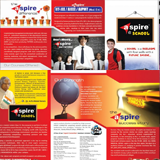- Call us: +9144 65373256/+91 98400 17317
- Email us: aksharaforms@yahoo.com
Continuous Computer Stationery Manufacturer in Chennai.
Welcome to Akshara
Products
A leading manufacturer of Continuous Stationery Forms for Computers is also called in western countries as Business Forms. These forms are made using specialized papers with interleaved One-time Carbon Papers. On a further development customers started using Carbonless Continuous Stationery. These are made for the use of Tax Invoice, Excise Challans, Export Invoice, Delivery Challans, Packing Slips, Form JJ, Purchase Orders, Payment Vouchers, Blank and EZR Forms.
Added to the above, we can offer you offset printing requirement like Brochure, Catalogues, Phamplets, leaflets, Envelopes, Letter Head, Receipts, Vouchers etc., using Single Color and Multicolor Offset Printing. Furthermore, we also offer a wide range of Printing Machinery spares for offset, Paper, and Packaging Industries.
Read about process of printing
Process Of Printing
The actual process of printing is quite involved. One of the most important functions in the process is pre-press production. This stage makes sure that all files are correctly processed in preparation for printing. This includes converting to the proper CMYK color model, finalizing the files, and creating plates for each color of the job to be run on the press.
Every printing technology has its own identifying marks, as does offset printing. In text reproduction, the type edges are sharp and have clear outlines. The paper surrounding the ink dots is usually unprinted. The halftone dots are always hexagonal though there are different screening methods.
Variations
Blanket-to-blanket: A printing method in which there are two blanket cylinders through which a sheet of paper is passed and printed on both sides. Blanket-to-blanket presses are considered a perfecting press because they print on both sides of the sheet at the same time. Since the blanket-to-blanket press has two blanket cylinders, making it possible to print on both sides of a sheet, there is no impression cylinder. The opposite blanket cylinders act as an impression cylinder to each other when print production occurs. There are also two plate cylinders on the press.
Blanket-to-steel: A printing method similar to a sheet offset press; except that the plate and cylinder pressures are quite precise. Actual squeeze between plate and blanket cylinder is optimal at .005"; as is the squeeze or pressure between the blanket cylinder and the substrate. Blanket-to-steel presses are considered one-color presses. In order to print the reverse side, the web is turned over between printing units by means of turning bars. The method can be used to print business forms, computer letters, and direct mail advertising.
Variable-size printing: A printing process that uses removable printing units, inserts, or cassettes for one-sided and blanket-to-blanket two-sided printing.
Dry Offset Printing: A printing process which uses a metal backed photopolymer relief plate, similar to a letterpress plate, but, unlike letterpress printing where the ink is transferred directly from the plate to the substrate, in dry offset printing the ink is transferred to a rubber blanket before being transferred to the substrate.
Computer-to-plate (CTP) / direct-to-plate (DTP)
Computer-to-plate (CTP) is a newer technology that allows the imaging of metal or polyester plates without the use of film. By eliminating the stripping, compositing, and traditional plate making processes, CTP altered the printing industry, which led to reduced prepress times, lower costs of labor, and improved print quality.
Printing – Offset & Multicolor Offset
Computer-to-plate (CTP) is a newer technology that allows the imaging of metal or polyester plates without the use of film. By eliminating the stripping, compositing, and traditional plate making processes, CTP altered the printing industry, which led to reduced prepress times, lower costs of labor, and improved print quality.
Printing – Offset & Multicolor Offset
Sheet-fed refers to individual sheets of paper or paperboard being fed into a press via a suction bar that lifts and drops each sheet onto place. A lithographic ("litho" for short) press uses principles of lithography to apply ink to a printing plate, as explained previously. Sheet-fed litho is commonly used for printing of short-run magazines, brochures, letter headings, and general commercial (jobbing) printing. In sheet-fed offset, “the printing is carried out on single sheets of paper as they are fed to the press one at a time.” Sheet-fed presses use mechanical registration to relate each sheet to one another to ensure that they are reproduced with the same imagery in the same position on every sheet running through the press.
Hosted and maintained by Legend IT Solutions.
















 +91 98400 17317
+91 98400 17317 aksharaforms@yahoo.com
aksharaforms@yahoo.com